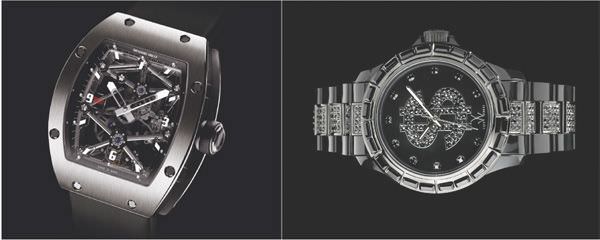On the Italian watch market, we notice a number of different trends. One in particular is growing at a rapid rate—alongside the historical large brands, new brands are quickly rising in stature and are, it seems, becoming increasingly appreciated by today’s consumers.
Italy, which is one of the major importers of Swiss timepieces, is not only representative of this trend, it is also one of the major players to take part in this phenomenon. In fact, we are seeing greater numbers of Italian watch brands or Italian design-inspired brands among those that are beginning to be recognized as major players in the industry. Two very recent examples are Giuliano Mazzuoli and Glam Rock.
Another observation is that watches have, once and for all, left behind their status as utilitarian time measuring instruments and have become emotional objects. It is to be expected then that their types and numbers will continue to increase. The latest statistics confirm this. The year 2007 ended showing major growth in watch sales, especially in terms of Swiss watch imports. In November 2007, alone, just before the holiday selling season, Italy imported watches worth 118.6 million Swiss francs, a net increase of 18.6 percent in relation to the same month in 2006. The nation is the fourth largest market for timepieces from Switzerland (after the United States, Hong Kong, and Japan) and is the largest importer in Europe. Total imports for 2007 were slightly more than 1.021 billion Swiss francs, showing an increase of 13.3 percent in relation to the previous year.

RICHARD MILLE RM012.
Hand-wound movement with tourbillon and mechanical aluminium elements, magnesium, silicium and titanium. Platinum case. Limited edition of 30 watches.
TOY WATCH All Black Money.
Quartz movement. Policarbonate case and synthetic mineral glass.
In addition to this positive trend, we can make another important observation—the Italian watch market is quite diversified. There are many trends that co-exist and that even sometimes contradict one another. For example, we notice that, while watches are generally continuing to increase in size, smaller pieces (among them, Cartier, Jaeger-LeCoultre, Rolex, Patek Philippe and Franck Muller, for example) are appearing on the wrists of Italian women who, a few years ago, were the first to launch the fashion for larger and more boldly designed feminine timepieces.
Another paradoxical trend is while major brands continue to add value to their traditional designs, watch enthusiasts are turning towards companies with whimsical or playful styles, or that display certain codes (the emblematic success of the ToyWatch is a good example), as well as those that use alternative materials, thus greatly expanding the world of luxury.
A fourth interesting trend is that Italians continue to wear watches signed by the largest names in the global fashion industry. The entry of the international fashion brands into the watch world is not only a stylistic decision, but an economic one as well. The recent foray into this segment by Prada, the only major brand to have resisted up to now, confirms this strategy.
Sports watches continue to enjoy the favour of many Italians who are attracted by their casualness and wearablity for all occasions. A large part of the attraction is the display of mechanical technology, even if only modestly demonstrated in most of the chronographs. Without a doubt, this sector will benefit from the media coverage of the Olympic Games in Beijing. We already saw this phenomenon during the America’s Cup that influenced the design of watches and their purchase.
Finally, we observe that growing numbers of small independent brands, which make up part of a new generation of timekeeping, are gaining favour with Italian watch aficionados, and their popularity will probably continue to grow (examples can be seen in companies such as FranÇois-Paul Journe, De Bethune, and Richard Mille). Will these smaller brands gradually be absorbed by large financial groups? Only time will tell. Whatever happens, however, this new emerging generation represents many enchanting ‘islands’ which have chosen to make small quantities—thousands or hundreds or even a few—pieces with high standards in terms of quality, design, and production methods. They are breaths of fresh artisanal air that Italian watch enthusiasts and collectors are learning to appreciate more and more.
Source: Europa Star February-March 2008 Magazine Issue





